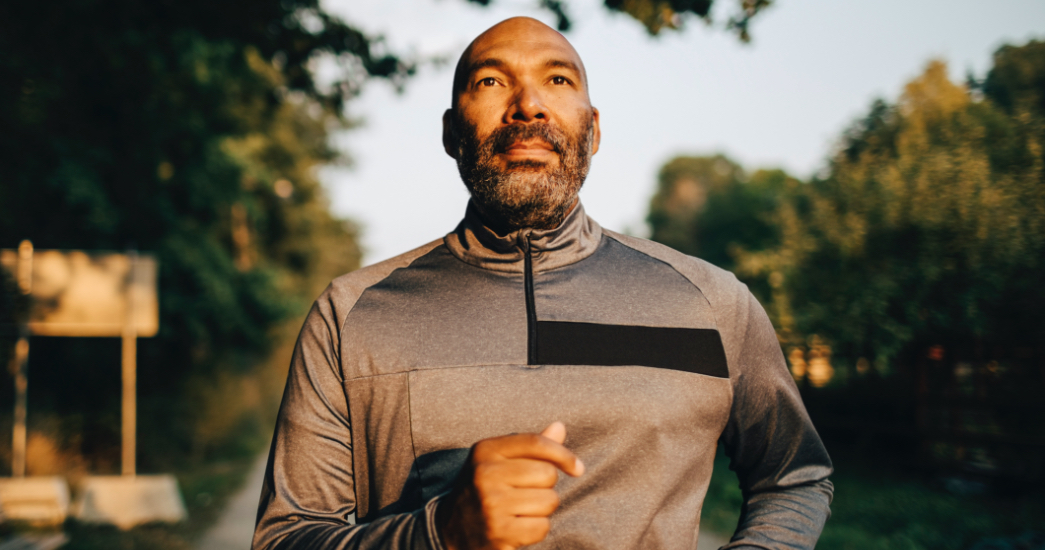
Published September 2021
As one of the trendiest social media platforms right now, TikTok is well known for having a wide variety of short videos on everything from lip-syncing and dance routines to DIY projects and even health advice. For people looking to improve their health by either eating better, exercising more or increasing overall well-being, TikTok is home to a range of health aficionados and fitness gurus. While there is no shortage of content, some people may be wondering: Is TikTok a reliable source when it comes to my health and fitness advice?
Due to TikTok’s growing popularity, especially among individuals ages 18 to 29, many doctors and health professionals have been turning to the platform to actively educate and curb the spread of health misinformation, particularly around COVID-19 vaccines. By searching the popular hashtags #DoctorsOfTikTok or #TikTokDocs, users can find thousands of educational videos featuring doctors, like Dr. Goodcoff (@seethemedlife) and Dr. Ryniec (@jessicaryniecmd), talking about various health and wellness topics.
Top Trending Health Videos on TikTok
We took a look at some of the top health trends on TikTok and asked two health professionals for their take on these viral videos. Here’s what they had to say:
 Liquid Chlorophyll — Miracle Drink or All Hype?
Liquid Chlorophyll — Miracle Drink or All Hype?
Known to many as a “miracle drink,” liquid chlorophyll is one of TikTok’s latest skincare trends with people claiming that the green juice helps them lose weight, boost energy, prevent cancer and reduce acne. Thousands of videos show users squirting the green liquid into a glass of water, swirling it around and then taking a sip. But what exactly is liquid chlorophyll, and should you be drinking it?
“Chlorophyll is an antioxidant found in green plants,” said Alicia McEnroy, registered dietitian nutritionist and owner of McEnroy Nutrition. It’s essentially what gives plants their green color. However, because chlorophyll doesn’t dissolve in water, McEnroy explained that chlorophyllin is what you are likely purchasing when you buy a liquid chlorophyll supplement. It’s also available as a topical formula and as ingestible softgels or tablets.
What the Professional Says:
“As far as I am concerned, there is not enough evidence to support the claims that liquid chlorophyll aids in weight loss, increasing energy or decreasing acne,” said McEnroy. “What I tell my clients is that if it sounds too good to be true, it likely is. While I don’t recommend it to my clients, I also don’t think it would be harmful if someone wanted to try it. If you want to include more chlorophyll in your diet, one surefire way to do so is to eat more green veggies!” Don’t know where to start? Use TikTok to explore new recipes as a way to get your veggie fix.
 Proffee (Protein & Coffee) — Should You be Drinking It?
Proffee (Protein & Coffee) — Should You be Drinking It?
The latest coffee concoction swirling around TikTok consists of cold-brew coffee mixed in with a protein shake. Known as “proffee” to many, the drink appears to offer the benefits of both protein and caffeination, and for individuals seeking to consume more protein, it might seem like the ultimate power drink. Some people think it might even help them lose weight. But should everyone be drinking it?
What the Professional Says:
“I don’t think there’s anything wrong with drinking ‘proffee’ if it is something that you enjoy,” said McEnroy. “If you are drinking it as part of your breakfast (or any other meal or snack), one that ideally includes protein, carbs and fat, I see no harm in it. We know that protein is an important nutrient to include throughout the day, so I’m all for making sure you’re eating enough of it.”
McEnroy mentioned that drinking “proffee” likely won’t contribute to significant weight loss but could be a good option if you’re looking to try something new. “Do I think it is going to lead to significant long-term weight loss for people? No. While I don’t think it makes coffee any more or less ‘healthy,’ people are always looking for ways to make coffee more enjoyable so this could be something to try if you’re looking for something new.”
 Abdominal Weight-Loss Dance — Does it Work?
Abdominal Weight-Loss Dance — Does it Work?
TikTok user @Janny14906 posted an abdominal exercise where users jerk their chest and hips forwards and backwards, while also twisting and dancing. It’s suggested that the five-minute exercise targets the abdominal muscles and reduces belly fat, but does it work?
What the Professional Says:
“Fitness professionals alike have come to the consensus that spot-reduction fat loss is a myth,” said William Petrocelli, a Massachusetts-based certified personal trainer. “This myth convinces people that gaining muscle around a specific area will help reduce weight, similar to doing crunches to get abs. The fact remains that this exercise will not cause an individual to reduce their belly fat.”
Instead of doing this particular abdominal weight-loss movement, Petrocelli recommends that individuals use a variety of exercises, depending on their experience, to help target different muscles located in the abdominal region to build a stronger core as a whole.
“I would start by doing an isometric exercise, like a basic plank, to help engage the core without using a lot of movement. The great thing about planks is that they build strength as well as endurance in the core and promote trunk stability. After that, I would suggest a butterfly sit-up to target the transverse abdominis and the deep abdominal muscle. Especially with the motion provided in the video, I feel as though an individual performing this ‘exercise’ would be at risk of hurting their back,” explained Petrocelli.
Petrocelli also mentioned that all these exercises are modifiable, which helps challenge the individual or make it easier depending on where they are in their workout journey. Harvard Pilgrim Health Care also offers virtual classes through our Living Well at Home program to both members and non-members. These classes include barre, yoga and Zumba, all of which may help to target your core.
 Weighted Hula Hoop — Will it Help Strengthen Your Core?
Weighted Hula Hoop — Will it Help Strengthen Your Core?
Many gyms were closed due to COVID-19, causing people to figure out ways to keep fit at home. Videos of people using weighted hula hoops have taken TikTok by storm, with users spinning the device around their waist for 10 to 30 minutes a day to try and reduce belly fat and achieve a slimmer waist. While weighted hula hoops are essentially a heavier version of the traditional hula hoop, some users claim that weighted hula hooping can cause abdominal bruising and other complications.
“One of the main issues fitness professionals struggle with is trying to make fitness seem fun to all populations,” said Petrocelli. “The hula hoop motion has a lot of benefits: It works several different muscles in the lower body and promotes hip mobility as well as strong engagement of the core. However, it’s important that people understand the potential dangers of this exercise.”
What the Professional Says:
“It’s important when using weight to increase gradually. If too much weight is introduced too early in the workout, it can have adverse results.”
In terms of weight, Petrocelli recommends two pounds at most on the hula hoop as you want to avoid over-stressing the muscles involved in the motion, especially if you aren’t used to it. “For individuals who suffer from back pain or a history of back injury, I would advise them to avoid this exercise as it could cause further complications and flare up that area, causing more harm than good,” said Petrocelli.
Overall, Petrocelli says that this exercise could definitely be used as an efficient cardio boost in a workout session, but it certainly does not replace a strength program nor reduce inches around the waist on its own.
Scrolling Through TikTok Health Trends
As you scroll through TikTok and see these and other health trends, it’s important not only to self-evaluate, but also to consult a doctor if you are unsure if it’s right for you. There is also a variety of credible alternative resources for fitness and wellness advice; beyond exercise classes, Harvard Pilgrim’s Living Well at Home program offers guided mindfulness sessions as well as health and wellness webinars.
To confirm eligibility for any programs or services mentioned in this article as it relates to your specific health plan, please reach out to your account executive or HR benefits team. You may also speak to our member services team at (888)-333-4742 or by sending a secure email. And for plan details and other member resources, log in to the member portal.


